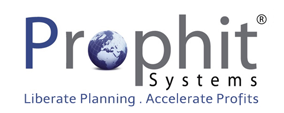Focus on forecasting
Where to begin?
I was recently asked , in the context of forecasting, “what should a new CEO look at in their first 180 days?”
While we are still new to a business, and before we know the given answers for why things are done, we often see opportunities with surprising clarity. Ranking and assessing which are the golden opportunities, while you are still new, is challenging but well worth the effort
Dissecting your forecasting in meaningful ways will enhance your visibility of your customers as well as your sales processes.
Reviewing your forecasts will greatly increase your understanding of the risks and opportunities within these revenue streams
Continual monitoring of these revenue streams will ensure that you are prepared to manage risks and exploit opportunities as they arise.
So my answer to this question would be “Interrogate your forecasted revenue streams in enough detail to see risks and opportunities as they arise”
The challenge then becomes, how do you interrogate your revenue streams when you are new to the business?
Scenario
I was recently invited to review a business that sold 11,500 SKUs across four major brands. They had a dozen distribution centres, selling to 8 regions across Australasia. Their supply foot print included 2 manufacturing sites here in Australia and 3 in Asia.
They had 2,500 retail sales customers, and a team of 24 key account and sales managers.
The challenge for me was determining how to view the Sales history and forecasting data, to quickly and clearly understand what was happening to this business.
Quick Fix
There are entirely too many customers to analyse meaningfully, even when just focusing on the major customers.
On closer inspection, there were many ship to customers, that belonged to the same retail chains. We introduced a notional national customer hierarchy.
Even after doing this, there were still some 1000 entries under the national customer category (Many stores did not belong to large chains, but they still had their own national customer entry)
In order to give us a manageable amount of customer groups, we reassigned the lowest volume national customers to a “Small Retail” group.
By adjusting the cut off of who was in and out of the “Small Retail” group, we got down to 15 National Customer groups (Approx 70% of all sales)
This for me is a manageable number of major accounts to review.
The 8 Regions and 4 Brands were other slices of the same sales revenue picture.
In order to qualify if the forecasts were sensible, we needed to compare what had recently sold, vs forecast and budget for the same period, and then use that to confirm the forward forecasts.
We constructed a Forecast vs Actual template that had three distinct regions
• Sales by National Customer group
• Sales by Region
• Sales by Brand.
Against each entry we displayed
Last quarters actuals vs Last Quarters Budget vs Last Quarters forecast
Next quarters fcast vs Next Quarters Budget, and full FYR projections
This formatting highlighted where there were inconsistent trends.
I distributed these to the sales managers, and requested commentary where there was significant movement in either the previous period to plan or future periods to plan.
This summary document (without comments) fit onto a single A4 page, and with comments spanned just a few pages.
Having taken the time to segregate and format these revenue streams, and armed with the commentary of the sales managers I was in a strong position to discuss the validity of the forecasts being presented.
By discussing and challenging these forecasts with the sales managers, other layers of insights started quickly coming into focus.
Top TIPS
1. Ensure you have enough resolution in your sales forecasts to see risks and opportunities as they arise
2. Look for the exceptions, what has changed since last month, and why
3. Challenge your teams forecasts, this will improve your understanding of your team and your customers
remember: What interests you will fascinate your employees. If you pay attention to your team’s forecasts, they will do their best to improve them.
Where to begin? I was recently asked , in the context of forecasting, “what should a new CEO look at in their first 180 days?” While we are still new to a business, and before we know the given answers for why things are done, we often see opportunities with […]
Read More...


